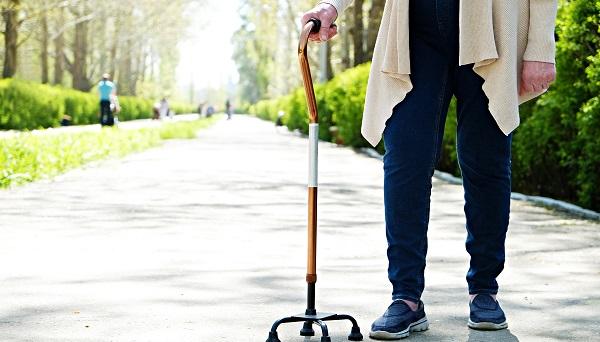PAD Continues to Elude Clinicians, Despite Gains: AHA
Peripheral disease is prevalent yet widely overlooked and undertreated, says the lead author of a new scientific statement.

Despite increasing awareness about the clinical importance of recognizing and treating PAD, numerous gaps in research and patient care need to be addressed, asserts a new scientific statement from the American Heart Association (AHA).
Writing chair Michael H. Criqui, MD, MPH (University of California, San Diego), said while the “limited knowledge” seen around 30 or 40 years ago with regard to PAD recognition has improved dramatically, the emphasis in clinical practice on only classic symptoms, such as cramping pain in the calves that goes away with rest, continues to a bit of a stumbling block.
“It’s important to recognize that only a minority of patients who have PAD have a classic presentation. They complain of all sorts of things, including pain that doesn't go away and discomfort that doesn't feel like pain, but rather feels like aching, or numbness, or weakness,” he told TCTMD. “We're missing people who have atypical symptoms, and that's the majority of patients who have PAD.”
In the statement, published online last week in Circulation, Criqui and colleagues also note that PAD may go undiagnosed in cases where it is mistaken for normal signs of aging, arthritis, or spinal degenerative disease. Unlike stroke, it is not widely considered a disabling condition despite strong evidence that it increases the risk of death and other hard outcomes, they add. “Moreover, limb-related complications attributable to PAD, such as lower extremity amputation and acute limb ischemia, are devastating.”
Another issue that they highlight is that while patients may be aware of their PAD status, their general practitioners may not have a clue. In the PARTNERS primary care study, for example, 83% of patients knew they had a PAD diagnosis compared with only 49% of their physicians.
Despite the fact that PAD is the third leading cause of atherosclerotic morbidity behind CAD and stroke, Criqui and colleagues say data suggest that cases have been rising globally every year since 1990.
“Unfortunately, pain in the legs doesn’t jump to the forefront of providers’ concerns the way that things like acute pneumonia or heart disease symptoms do,” Criqui noted. Even when providers do take action and send patients for an ankle-brachial artery (ABI) test, it may be less accurate in certain patient groups. PAD may go unrecognized unless additional studies, such as segmental perfusion pressure or transcutaneous oxygen pressure, are performed.
Requires Vigilance, Evidence-Based Care
The scientific statement provides guidance on imaging and screening options, and encourages physicians to be vigilant about nonconventional risk factors such as inflammatory markers, HIV status, environmental exposures, and depression. In the ARIC study, for example, moderate and high levels of depressive symptoms were linked to greater risk of PAD.
Also underappreciated, according to Criqui and colleagues, is the “magnitude and significance of functional impairment in PAD.” Without doing objective testing to rule out PAD, patients will continue to decline in physical function and limit their activities to avoid pain, often leading to a worsening quality of life, they add.
We're missing people who have atypical symptoms, and that's the majority of patients who have PAD. Michael Criqui
Turning to underutilization of evidence-based therapies, the scientific statement notes that contemporary literature attests to low rates of adherence to aspirin and clopidogrel to mitigate the risk of MI, stroke, and vascular death in PAD. Similarly, despite a level A recommendation for statin therapy in all PAD patients, recent data suggest that just 31% of asymptomatic patients and 62% of symptomatic patients take them.
Moreover, despite a high-profile decision in 2017 by the Centers for Medicare & Medicaid Services to cover supervised exercise for PAD, most PAD patients don’t participate in the programs. “A lot of people do very well on exercise therapy, but it’s not routinely being done, and the evidence is that facilities either are not available or physicians are not referring patients to the programs,” Criqui said.
Another important piece of the statement, he noted, is the emphasis on addressing gaps and challenges in revascularization. In addition to the need for quality improvement initiatives to avoid unnecessary overuse of invasive procedures for mild PAD, Criqui and colleagues say more granularity is needed in clinical trials and call for incorporation of limb-staging classification schemes to increase objective comparisons of therapies and equalize clinical and anatomic factors. They also address the paclitaxel mortality controversy, which has yet to be fully resolved, advising that “the continued use of these devices should be individualized, carefully balancing the risks and benefits.”
L.A. McKeown is a Senior Medical Journalist for TCTMD, the Section Editor of CV Team Forum, and Senior Medical…
Read Full BioSources
Criqui MH, Matsushita K, Aboyans V, et al. Lower extremity peripheral artery disease: contemporary epidemiology, management gaps, and future directions. Circulation. 2021;Epub ahead of print.
Disclosures
- Criqui reports no relevant conflicts of interest.




Comments